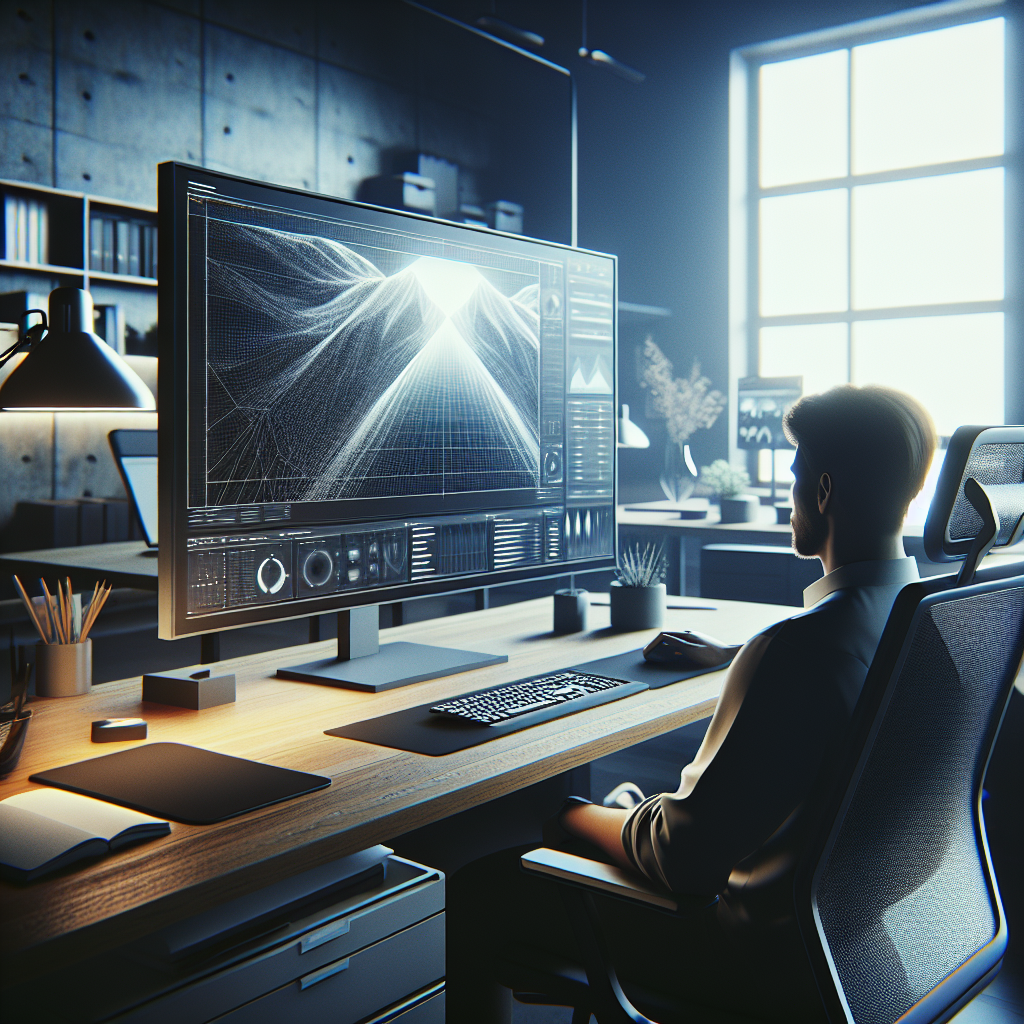Imagine this: you’ve just spent hours in front of your computer, working tirelessly to meet your deadlines. But as the day wears on, you start to feel a strain in your neck and your eyes begin to tire. It’s not an uncommon scenario for many office workers, but what if there was a simple solution? In this article, we will explore the importance of properly positioning your monitor on your office desk to ensure optimal viewing. Whether you’re a seasoned professional or someone who spends hours on end in front of a screen, these tips will help you create a comfortable and productive workspace. So, let’s get started and unlock the secrets to a healthier and more efficient workday.
Importance of Monitor Positioning
When it comes to setting up your office workspace, the positioning of your monitor is often overlooked. However, proper monitor positioning plays a crucial role in maintaining good ergonomics and promoting overall health and productivity. By positioning your monitor correctly, you can reduce the risk of eye strain, headaches, neck and back pain, and other discomforts that can arise from poor posture.
Ergonomics and Health
Ergonomics refers to the study of designing a workspace that promotes efficiency, productivity, and most importantly, the well-being of individuals. Proper monitor positioning is an essential aspect of ergonomics, as it ensures that your body maintains a neutral position while you work. When your monitor is positioned correctly, you can avoid straining your eyes, neck, and back, minimizing the risk of developing musculoskeletal disorders.
Factors Affecting Monitor Placement
Before delving into the specifics of how to position your monitor, it’s important to consider various factors that can influence monitor placement. The size and type of your monitor, the layout of your office desk, the amount of desk space available, and the lighting conditions in your workspace all play a role in determining the optimal positioning for your monitor. Taking these factors into account will help you create a comfortable and efficient setup.
Choosing the Right Desk
When it comes to monitor positioning, the type of desk you choose can significantly impact your viewing experience. Investing in a desk that provides ample space, adjustable height options, and sufficient cable management solutions is essential for creating an ergonomic workspace. Look for desks with adjustable heights, as they allow you to customize your monitor’s position according to your specific needs.
Ideal Distance from the Monitor
Maintaining the appropriate distance between your eyes and the monitor is crucial for optimal viewing. A general rule of thumb is to sit at a distance of about arm’s length away from the screen. This distance allows you to see the content on your monitor without straining your eyes. Adjusting the distance may be necessary based on the size of your screen and your personal vision needs.
Positioning the Monitor at Eye Level
Positioning your monitor at eye level is essential to avoid strain on your neck and back. Placing your monitor too high or too low can force you to tilt your head unnaturally, leading to discomfort and potential long-term issues. Ideally, the top of the monitor should be at or slightly below eye level. This positioning allows you to maintain a neutral posture, with your head facing forward and your eyes looking straight ahead.
Considering Lighting Conditions
Creating an optimal viewing environment involves considering the lighting conditions in your workspace. Avoid placing your monitor directly in front of bright windows or other light sources, as this can lead to glare and reflections on the screen. Ideally, position your monitor perpendicular to windows to minimize glare. It’s also important to adjust the brightness and contrast settings on your monitor to ensure comfortable viewing.
Avoiding Glare and Reflection
Glare and reflections on your monitor can cause eye strain and make it difficult to view the screen clearly. To minimize glare, you can make use of anti-glare filters or matte screen protectors. Additionally, adjusting the angle and tilt of your monitor can help reduce reflections caused by overhead lighting. Experiment with different positions to find the one that provides the clearest view while minimizing glare and reflections.
Adjusting Monitor Tilt and Viewing Angles
Finding the right tilt and viewing angle for your monitor is essential for comfortable viewing. The tilt angle of your monitor refers to the forward or backward tilt, while the viewing angle refers to the left or right tilt. A slight tilt backward can help reduce neck strain, while adjusting the viewing angle can prevent color shifting and distortion. Experiment with different angles to find the one that feels most comfortable for you.
Optimizing Monitor Height
Ensuring your monitor is at the correct height goes hand in hand with proper ergonomic positioning. If your monitor is too low, you may find yourself bending your neck downwards, leading to strain. Using an adjustable monitor stand or mount can help you achieve the optimal height. Additionally, make sure the monitor is centered directly in front of you, so you don’t have to twist or strain your neck to view the screen.
Using Monitor Stands and Mounts
Monitor stands and mounts offer flexibility and customization options for positioning your monitor. Adjustable stands allow you to change the height, tilt, and viewing angle to suit your preferences. Additionally, monitor mounts enable you to free up valuable desk space by securely attaching the monitor to a wall or using a monitor arm. By using stands or mounts, you can achieve optimal viewing angles and maximize your comfort.
Ensuring Proper Cables Placement
Messy cables can not only be aesthetically unpleasing but also pose a safety hazard. Ensure that the cables connecting your monitor are neatly organized and placed to avoid tangling or accidental tripping. Desk cable management solutions, such as cable trays or adhesive clips, can help keep your cables streamlined and out of the way. A clutter-free workspace allows you to focus on your tasks without the added distractions of tangled cords.
Regular Cleaning and Maintenance
Maintaining a clean monitor is essential for optimal viewing. Dust, fingerprints, and smudges can all affect the clarity of the screen and strain your eyes. Use a microfiber cloth or a screen cleaning solution specifically designed for monitors to wipe away any dirt or smudges. Additionally, regularly check for any loose connections or signs of wear and tear on cables to ensure your monitor remains in good working condition.
In conclusion, properly positioning your monitor on your office desk is key to maintaining good ergonomics, promoting health, and optimizing your viewing experience. By considering factors such as desk choice, monitor distance, eye level positioning, lighting conditions, and cable management, you can create a comfortable and efficient workspace that supports your well-being. Regular cleaning and maintenance of your monitor will ensure that it remains in optimal condition for years to come. Take the time to set up your monitor correctly, and you’ll reap the rewards of improved productivity and reduced discomfort in your daily work routine.

